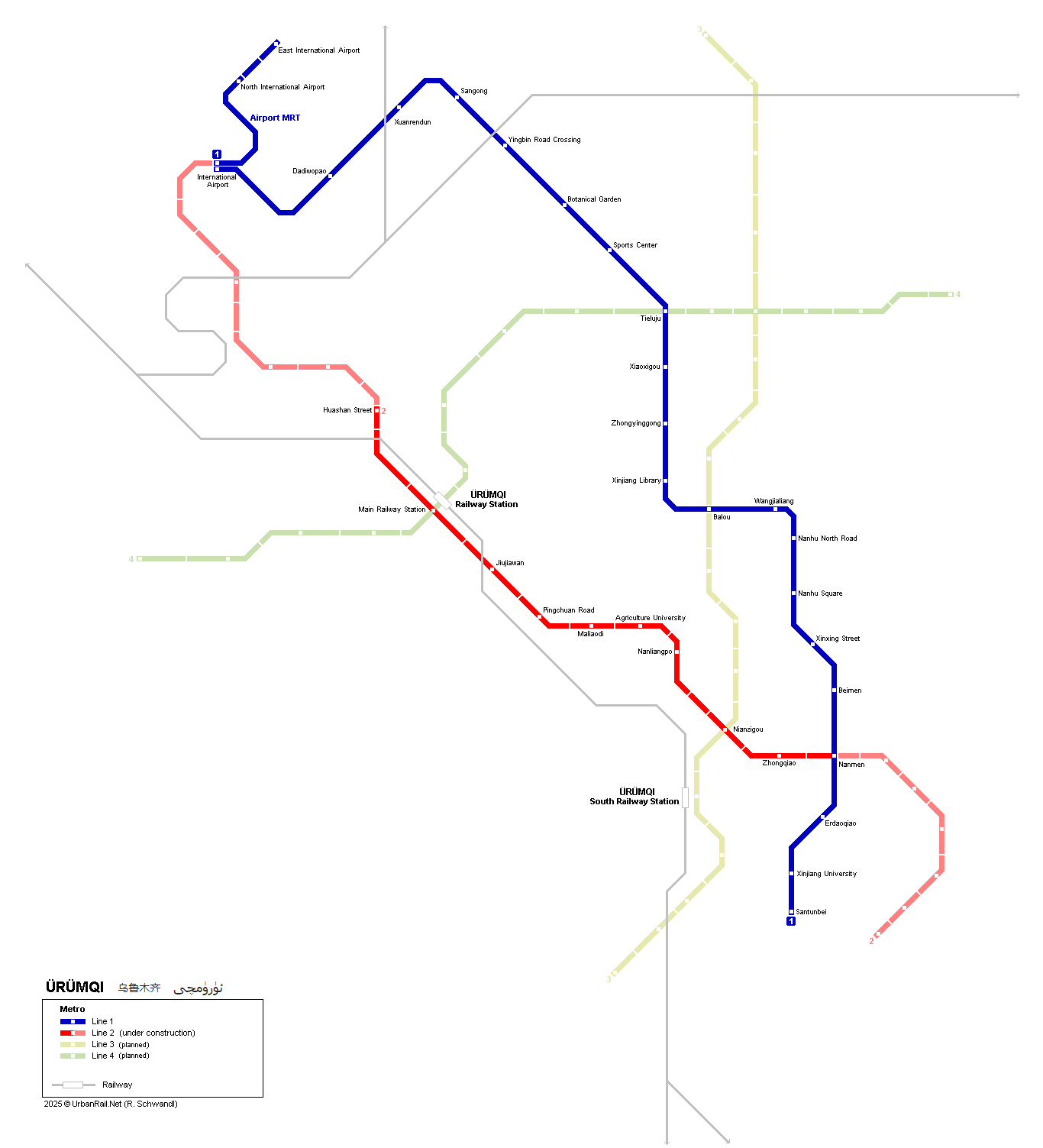
|
[ UrbanRail.Net ] [ Europe ] [ Americas ] [ Asia ] [ Africa ] [ Oceania ] [ News ] [ Books ] [ Links ] |
|
ÜRÜMQI
|
| China |

|
Ürümqi
|
|
Ürümqi, capital of the Xinjiang Uyghur Autonomous Region in the far northwest of China, some 2,400 km west of Beijing; 3.5 million inhabitants in urban area.
|
| Line 1 |
|
- total length 27.3 km with 21 stations Opened:
Airport
MRT > This section will become part of line 2 in the medium
term! Opening
soon: North International Airport - East International Airport (1.4
km) |
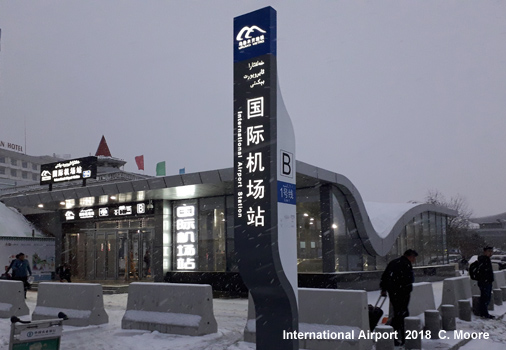
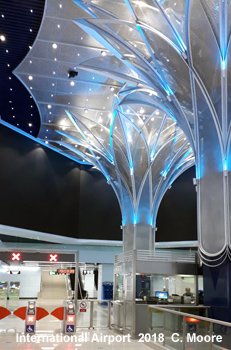
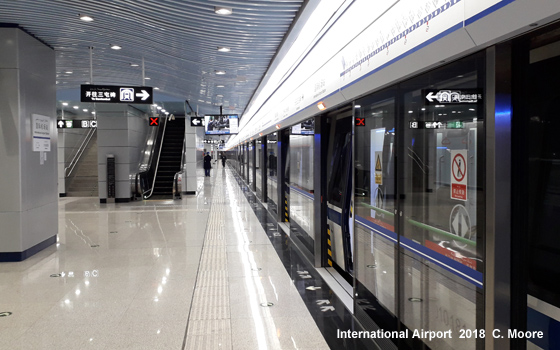
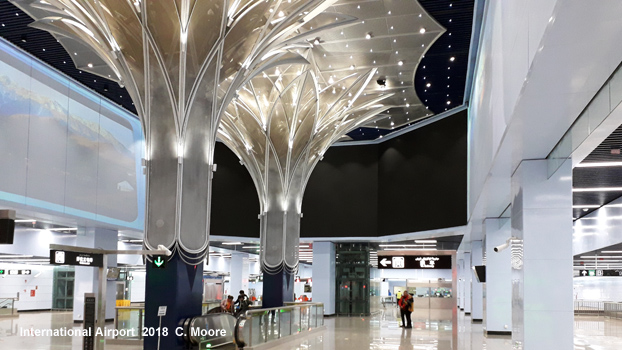
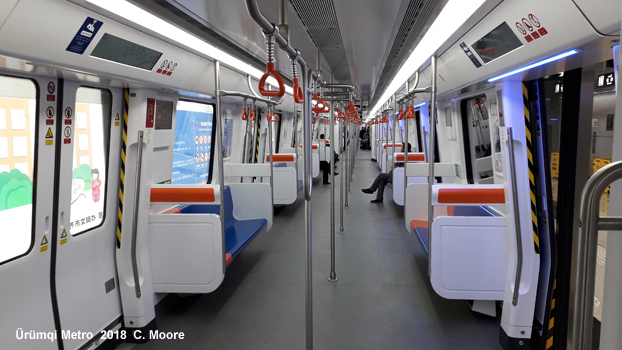
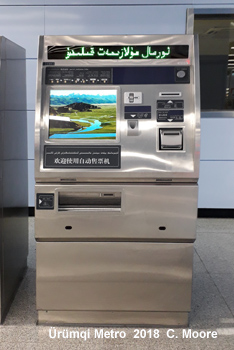
|
|
Photos
|
|
Links
|
|
Ürümqi Metro (Official Site) Ürümqi Metro at Wikipedia
|
|
In November 2018, Craig Moore reports from Ürümqi: r mqi Metro The rapid economic development of eastern China has brought massive amounts of metro construction and this has been replicated, to a lesser degree, in central China (e.g. Chongqing/Chengdu). However, metro construction in the less developed west of the country has been slower and only now, in late 2018, does this vast region have a functioning Metro, over 10 years since the dynamic phase of metro operational expansion began in the PRC. r mqi s nearest metro neighbour is the Kazakh city of Almaty, some 860km distant. But this is much closer than the nearest Chinese Metro - Chengdu and Xi an are pretty much equidistant from r mqi, being 2100km to the east! Although r mqi is a majority Han city, the metro also offers a nod to the Uyghur culture which is dominant in the province of Xinjiang as a whole (the Uyghur are a Turkic people with ethnic ties to Central Asia). Therefore, the isolated location of r mqi and the cultural distinctiveness of Xinjiang has created a somewhat distinctive metro environment. The r mqi Metro is operated by URTC and is currently a 16.6km single line running fully underground from Diwopu International Airport in a southeasterly direction to Balou. The standard gauge line uses overhead power and houses 12 stations (average 1.4km station gap) as it passes Sangong, the high-tech development district (Xinjiang is the launch area for the Chinese Space Agency), Xiaoxigou and the central area around Balou. Trains run under broad corridors in the central area and operate from 0800-2200 with 10min base headways. The stations have smart street entrances with nicely designed totems and escalators to the entrance area. Here lies security, lovely ticket machines showing images of the amazing natural environment in this province (tickets cost 2-5 yuan in card form), service offices and smart ticket barriers. Whilst all Chinese Metros have security scans for passengers, there is a very strong presence here with very thorough checks and a request to see passports/ID for non-citizens. Ticket halls are large and bright with slatted ceilings of pastel shades and information boards. These differ from station to station in terms of colour. Hard copy information is also available, offering how to use the metro information. Centrally located stairs and escalators lead to the platforms. These are island platforms with the exception of the airport station, which has side platforms. The names of the metro stations, wayfinding and strip maps are provided in three languages: Chinese, English and Uyghur, as are audio announcements. Six-car platforms have full screens, RTI screens and strip maps (future proofed for expansion/transfer). At this level the ceiling designs are interesting but all else has a typically Chinese layout. The CRRC trains operate in six-car sets and are white with a broad dark window band and blue line stripe below. The frontage also has a reversed out logo. The interior is bright with blue/orange side seating and interestingly designed grab poles. There is a dynamic strip map above the doors and tri-lingual audio information. Although all strip maps have been future-proofed there is no schematic map on trains or platforms perhaps once the system expands a decent map will be produced. Trains are not particularly busy but travel at speed, especially on the initial section from the airport where there are significant gaps between the first three stations. The trains are lovely and the ride quiet and smooth. Although much of the structure and operations are standard to China, this gleaming new line has some lovely station design features and Uyghur symbolism. Riding a pretty underused metro in the middle of a huge landmass, miles from another major city is an interesting experience. |
|
|
|
|
2015 © Robert Schwandl (UrbanRail.Net)